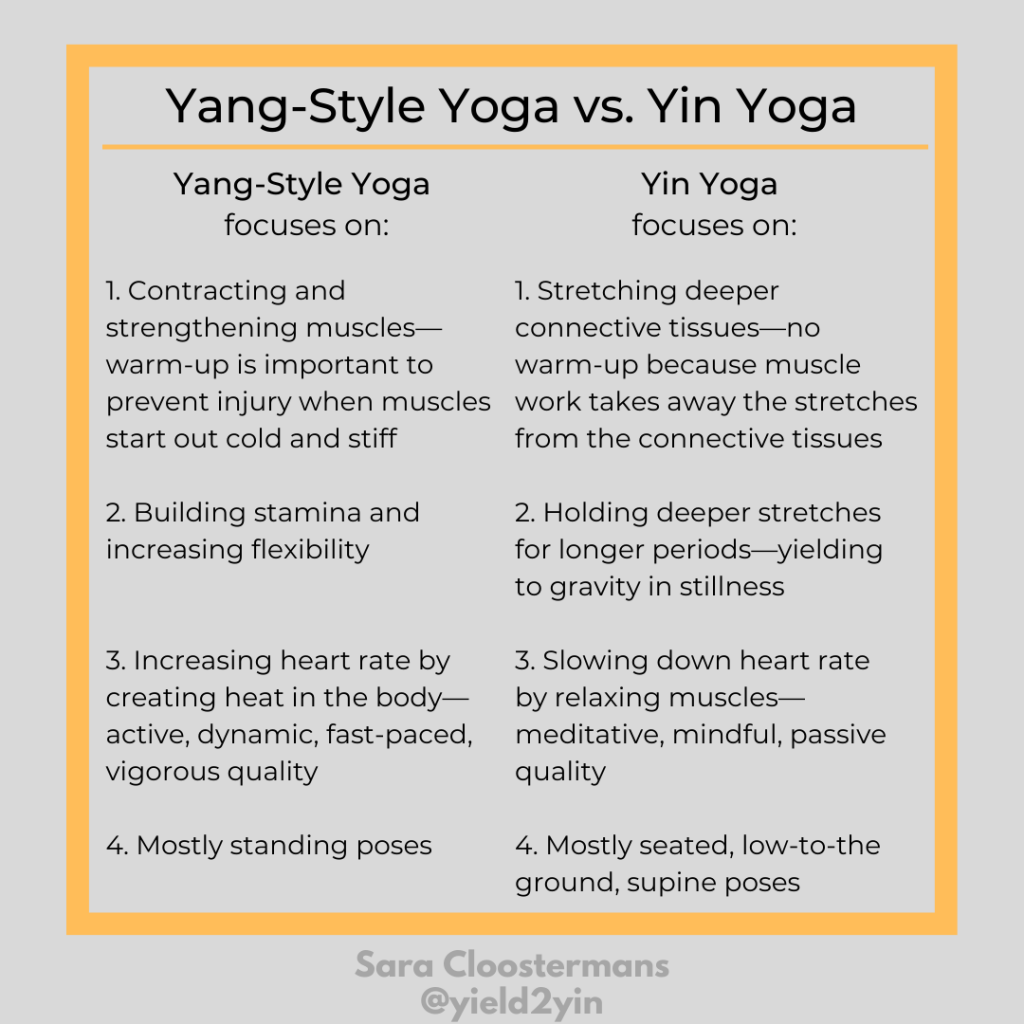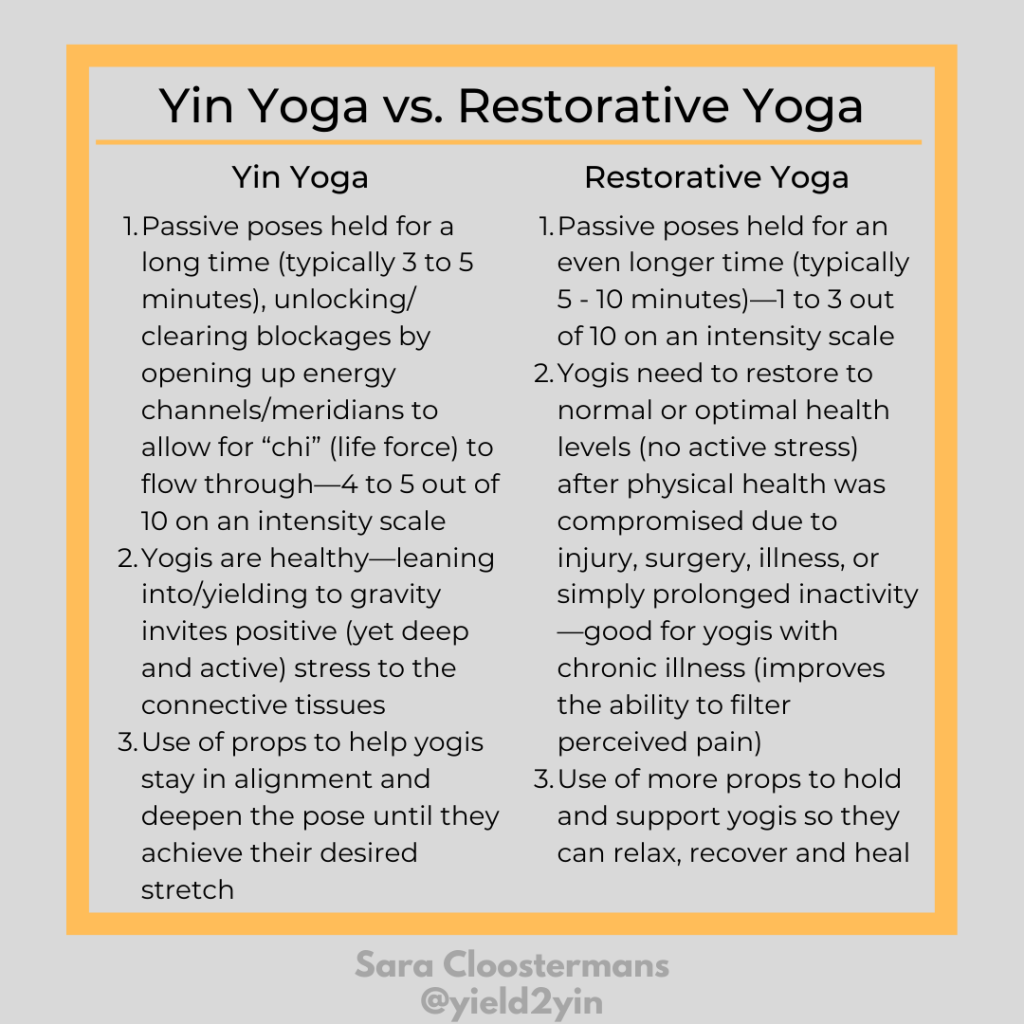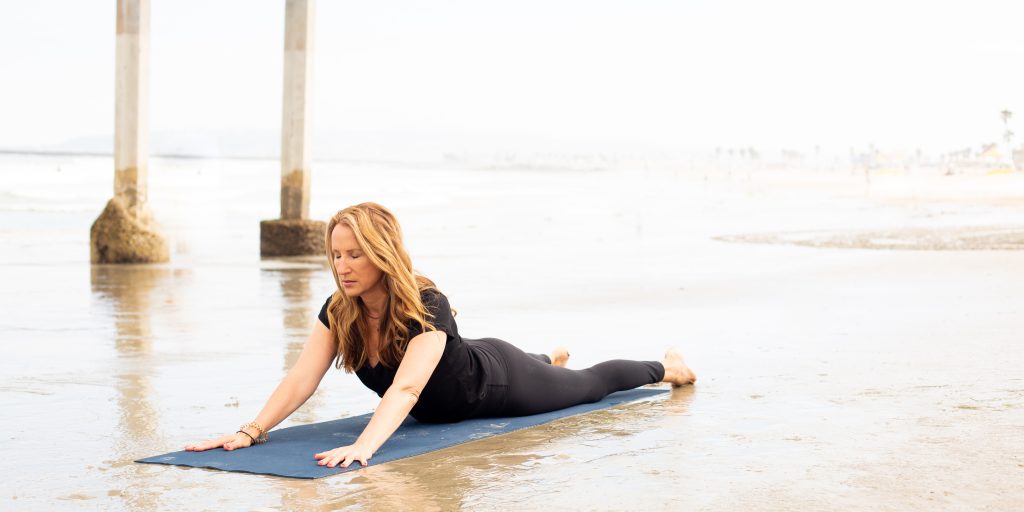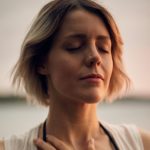I had been practicing yang-style yoga for a decade and a half when I was first introduced to the benefits of yin yoga in 2015. It was a yin yoga class at Riffs Yoga Studios in Bird Rock, La Jolla, on their beautiful outdoor patio deck.
I was immediately drawn to this style of yoga because I had just recovered from a year-long neck injury. I instinctively knew a slower, more gentle yoga approach would be more appropriate for me. A “safe” practice was what I was all about after living with chronic pain for an entire year in 2014.
Up until the start of the pandemic, I had only been practicing yoga once or twice a week in different local yoga studios. But ever since the start of the pandemic, in the beginning of 2020, this changed.
Like most other yogis, I began practicing at home. I experienced the ease and immediacy of in-home practices and discovered a handful of incredibly inspiring and talented online yoga teachers both through YouTube and Gaia. (As if this convenience had not been available prior to the pandemic 😂). Before I knew it, I was practicing daily, up to an hour a day if time allowed.
Yin Yoga Changed My Life
Yin yoga has been a life-changing experience for me. It has turned into a personal need, not a want—something I look forward to as much as my cup of coffee in the morning. My daily practice nurtures my body, mind, and soul more than anything I have ever experienced.
A great way to describe the positive effects of a yin yoga session is by comparing it to how you would feel after an acupuncture-massage combination session. I am not suggesting you cancel your acupuncture or massage appointments at all. But if you do not have health insurance, your health insurance does not include these types of sessions, or massage and acupuncture services are not within your budget, yin yoga is the best way to treat yourself to some free body, mind, and soul magic.
Because the healing power of yin yoga has so significantly improved the quality of my life, I was driven to write about it and share it with anyone who wishes to learn more. Who knows, maybe finding out more about this type of yoga inspires you to integrate the practice of yin into your daily routine, as I did into mine.
At a minimum, you now know of the existence of yin yoga and its healing potential, especially if practiced in combination with yang-style exercise. This does not have to be a yang-style yoga practice. For me, it is riding the Peloton bike in my garage. For you, it may be running, kickboxing, swimming, dancing, rock climbing, surfing, or any other exercise that gets your heart pumping.
The practice of yin yoga is also extra powerful in combination with attending psychotherapy—of course, as a “talk” therapist by profession, I just had to add this last bit.
I have just three things to teach: simplicity, patience, compassion.
These three are your greatest treasures.
—Lao-Tzu, Daoist Philosopher
What Is Yin Yoga?
Yin yoga is an introspective yoga practice. It is a deeply meditative, passive, and slow-paced yoga style with longer-held poses. The postures are easy and soft—they develop breath awareness and mindfulness, and consequently, add calm and peace to our life.
Yin yoga is also known as the “fountain of youth,” “the yoga of the joints,” “Taoist yoga,” or “Tao yin.”
The yin yoga poses are pulled from traditional Indian Hatha yoga, yet the concept of holding the asanas for a significant length of time is from ancient Taoist (or Daoist) Chinese practices.
As you can see, I use the words “asanas” and “poses” interchangeably. The Sanskrit word for “pose” is “asana,” which means “manner of sitting.”
Yin yoga is not so much about the external appearance, but so much more about the internal experience.
Yin Yoga…mimics reality because what you find when you clean isn’t always pretty, and you don’t always look pretty when you are in the act of cleaning.
Kate Smith (Yin Yoga and the of Art Letting Go)
Yang-Style Yoga vs. Yin Yoga
Most styles of yoga are yang styles, such as Hatha and Vinyasa or power yoga.

Yang-style yoga and yin yoga complement each other.
Yang is warm, fast, and active while yin is cool, slow, and passive.
Yang tissues can be seen as our muscles, blood, and skin. Yin tissues can be seen as our ligaments, joints, and bones.
In yin yoga, instead of “chi” (life energy) flowing to the muscles (yang), chi flows to the bones and joints and even enhances organ function, including the digestive organs.
Is it better to tighten muscles (yang) or to relax them (yin)? That depends on your intention. We tighten our muscles to protect our joints. We relax our muscles so we can exercise our joints. What is your intention in the pose you are doing?
—Bernie Clark, “The Complete Guide to Yin Yoga”
The Benefits of Yin Yoga
Practicing yin yoga is beneficial to the body, mind, and soul:
Body Benefits of Yin Yoga
- Stretches fascia (“a thin casing of connective tissue that surrounds and holds every organ, blood vessel, bone, nerve fiber and muscle in place”—Johns Hopkins Medicine)
- Increases joint mobility and flexibility
- Enhances organ function (heart, lungs, kidneys, and digestive organs)
- Lowers blood pressure
Mind Benefits of Yin Yoga
- Helps with focus and a clearer mind
- Relieves stress and anxiety
- Benefits sleep
- Improves overall mental health (including symptoms of depression and anxiety)
- Taps into the parasympathetic nervous system (rest and digest vs. fight or flight)
Soul Benefits of Yin Yoga
- Slows down breathing and quiets the mind
- Increases self-awareness
- Frees up stagnant energy (emotional blockages)
- Generates flow of “chi” (life force) throughout our whole being
For more on the benefits of yin yoga for body, mind, and soul, I highly recommend reading the blog post “The Benefits of Yin Yoga For Body, Mind and Soul” by Isabelle Pikoern.
Are Yin Yoga and Restorative Yoga Different?
Both yin and restorative yoga:
- Down-regulate the nervous system by tapping into the parasympathetic nervous system (rest and digest)
- Reduce inflammation in the body
- Promote lymphatic drainage and immunity
- Improve circulation and blood flow
- Focus on breath work
- Help with stress relief, calm, and relaxation
- Are slow-paced
- Are suitable for all levels and all ages
Yin yoga and restorative yoga have different origins and different intentions.
Yin yoga originates from China. On the other hand, restorative yoga originates from the teachings of B.K.S. Iyengar, a yoga master from India. It was popularized in the U.S. by his student Judith Lasater in the 1970s.

Who are the “big four” yin yoga teachers?
These four yin yoga teachers have played an important role in bringing this healing modality to us:
- Paulie Zink: The father of yin yoga, a martial arts expert and Taoist yoga teacher, who introduced yin yoga to the western audience in the late 1970s. Keep in mind, however, that yin practices have been a part of Kung Fu training for thousands of years.
If you want to move like the Dao, move like a cow.
—Paulie Zink
(Cows are considered sacred in Hindu and Buddhist beliefs. They are symbols of life, who move through life slowly and serenely with a sense of peace, which yogis call “Shanti” in Sanskrit.)
- Paul Grilley (Paulie Zink’s student): Combined his prior knowledge of anatomy, his new knowledge of Taoist yoga introduced by Paulie Zink, and the meridian theory, one of the fundamental theories of Chinese medicine, into the heart of his yin yoga practices and teachings = model of body, mind and soul
- Sarah Powers (Paul Grilley’s student): Came up with the three principles of yin yoga. As soon as I learned about these principles, I became fascinated by the similarities between the fundamentals of yin yoga and my approach to therapy when working with clients in my private practice as a marriage and family therapist.
- Bernie Clark (Sarah Powers’ student): Has been a yogi for 35+ years, and is interested in anatomy, physiology, psychology, energy work, philosophy, and mythology. Bernie is an amazing yoga teacher, educator, and author.
Practice with intention and attention.
—Bernie Clark
Yin Yoga Resources
Here are a few great resources to soak up those yin yoga benefits!
1. My favorite online yin yoga instructors
On YouTube
- Jessica Richburg
- Brittany Timberlake – Timberlake Yoga
- Travis Eliot
- Kassandra Reinhardt – Yoga with Kassandra
- SaraBethYoga
- Lisa – The Bare Female
On Gaia
Of course, in no way am I discouraging yogis from going to live yoga classes in their community. Online classes just work better with my lifestyle, but overall I believe that face-to-face contact, the energy in a yoga studio, and being an active part of a yoga community have extra healing elements that online classes are unable to provide.
2. My favorite yin yoga gear
My yoga experience and education
I am a dedicated daily yin yoga practitioner and enthusiast, though I am NOT qualified to teach yoga. This past year, I completed an online Yoga Alliance-certified 30-hour training course by Kassandra Reinhardt, not intending to become a teacher, but to deepen my understanding of yin yoga as a healing modality.

Yield2Yin
- Healing Card Deck: A Therapist’s Advice 55-Card Healing Deck by Sara Cloostermans
- Book recommendation: The Complete Guide To Yin Yoga – The Philosophy & Practice of Yin Yoga by Bernie Clark and Sarah Powers
- Mantra: I AM HEALTH // with diaphragmatic breathing
- Yin Yoga Asana: Caterpillar Pose
This page includes Amazon Associate affiliate links. This means I may earn a small commission at no cost to you if you purchase a product I suggest, and for that reason, I only recommend products I believe in. Learn more HERE.







